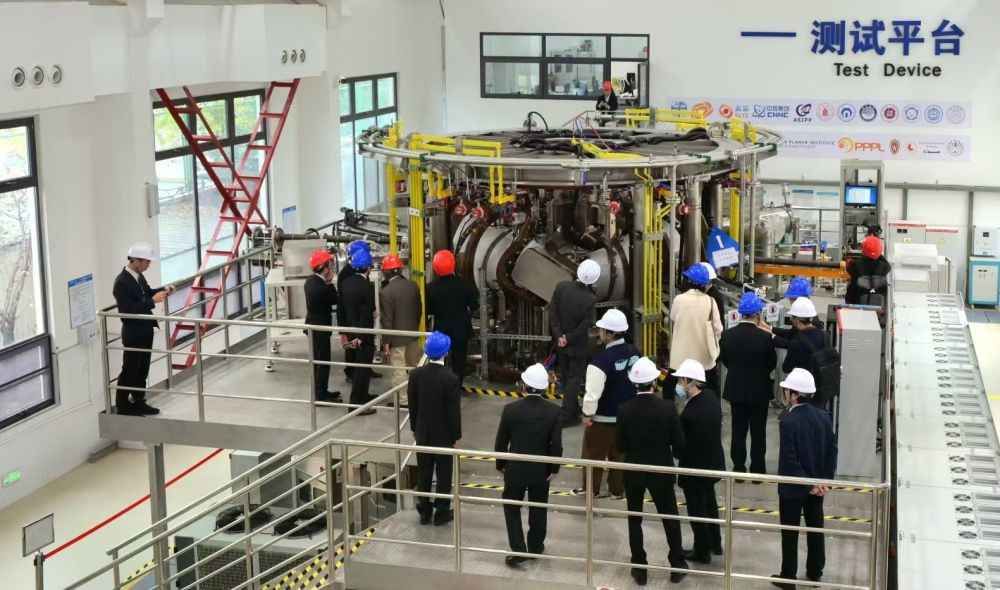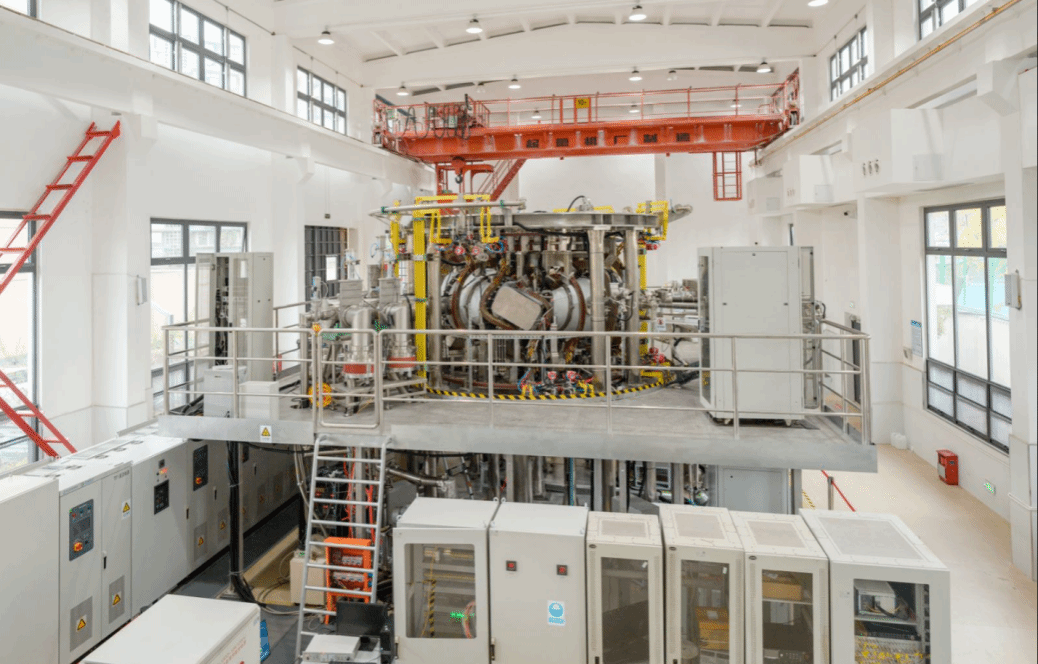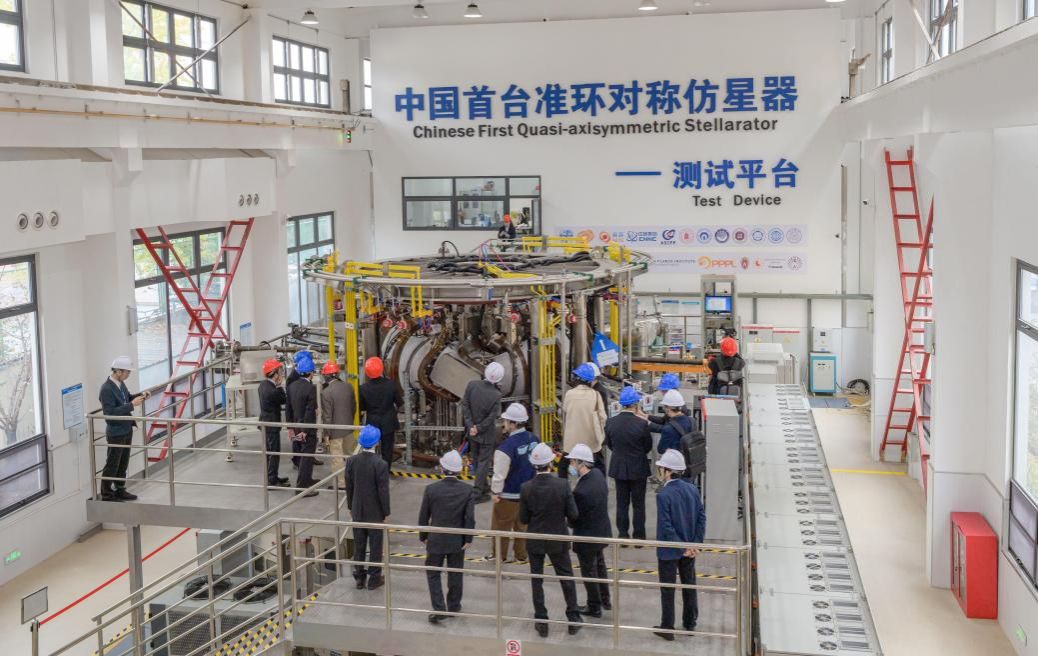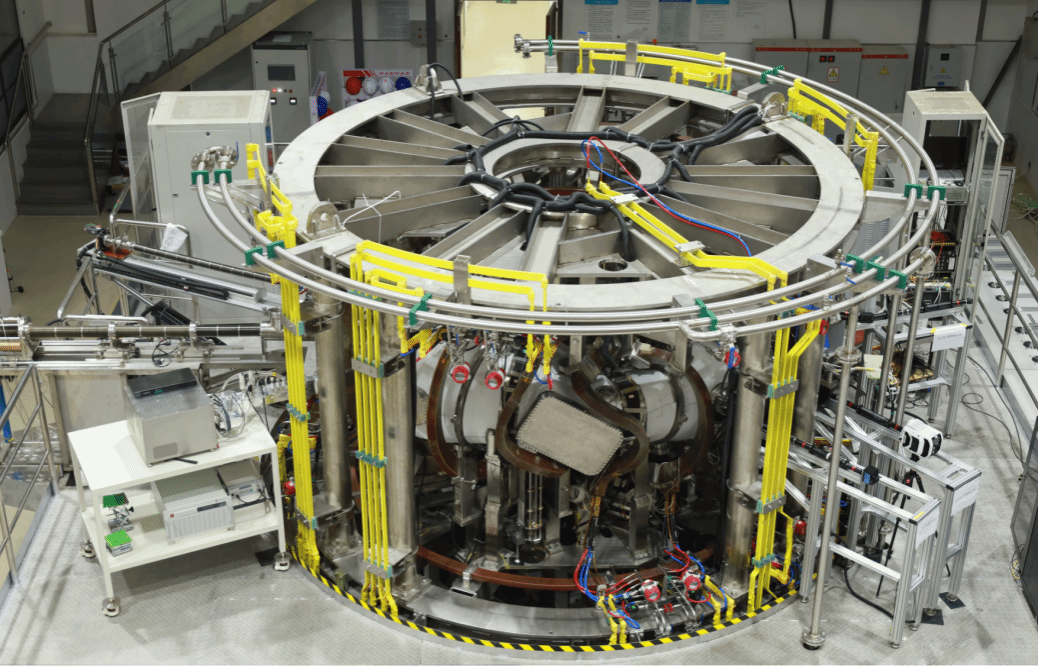On November 13, the achievement exchange conference for China's first Quasi-Axisymmetric Stellarator Test Platform (CFQS-T) was held at Southwest Jiaotong University. Professor Xu Yuhong, Chief Scientist of the university's Fusion Science Research Institute, delivered a report on CFQS research progress and CFQS-T achievements.
Attending experts concluded that CFQS-T's operation has, for the first time internationally, confirmed the "quasi-axisymmetric" magnetic field configuration, filling a gap in China's stellarator research. This achievement makes China the third country after the United States and Germany to master high-precision manufacturing technology for "three-dimensional non-planar modular coils."

Xinhua News Agency published an article titled "New Breakthrough in China's Quasi-Axisymmetric Stellarator Research," while Science and Technology Daily reported under the headline "Major Phase Achievement Made on China's First Quasi-Axisymmetric Stellarator Test Platform," providing in-depth coverage of the research's significance and international impact. The reports were widely reprinted by Reference News, People's Daily, Global Times, and other media outlets.

Xinhua News Report:
CHENGDU, November 15 (Xinhua) — The Chinese self-developed and manufactured Quasi-Axisymmetric Stellarator Test Platform has experimentally verified the feasibility and advancement of the quasi-axisymmetric magnetic field configuration theory, laying the foundation for the platform's future high-parameter operation.
This information was revealed at the achievement exchange conference held in Chengdu on November 13. The Quasi-Axisymmetric Stellarator project led by Southwest Jiaotong University is a major scientific and technological infrastructure in Sichuan Province's "14th Five-Year Plan." The project has now entered the construction phase.
A stellarator is a type of controlled nuclear fusion device. By design, it mimics nuclear fusion reactions inside stars, confining plasma-state hydrogen isotopes deuterium and tritium, and heating them to approximately 100 million degrees Celsius to achieve sustained nuclear fusion for continuous energy production. Currently, the representative stellarator in operation internationally is Germany's "Wendelstein 7-X."
Professor Xu Yuhong, Director of the Fusion Science Research Institute at Southwest Jiaotong University, stated that achieving fusion power generation as soon as possible is a common goal of major industrialized nations worldwide. Magnetic confinement fusion is one of the primary technological approaches currently pursued by humanity to develop controlled fusion energy. Tokamaks and stellarators are the two main types of magnetic confinement fusion devices internationally. Although technologically more complex than tokamaks, stellarators offer advantages such as no need for current drive and steady-state operation, effectively avoiding major disruptions caused by plasma current.
The three-dimensional modular coil is a key component of the quasi-axisymmetric stellarator. Professor Xu explained that while traditional stellarators have lower confinement performance than tokamaks, "quasi-axisymmetry" represents an advanced stellarator magnetic field configuration that combines the high confinement performance of tokamaks with the steady-state operation of stellarators, aligning with the needs and development direction of future commercial fusion reactors.
"Through five years of R&D, the scientific research team designed and manufactured the three-dimensional modular coils with sub-millimeter precision. This has enabled the achievement of an ultra-high precision quasi-axisymmetric magnetic field configuration, reduced neoclassical transport losses, improved plasma confinement performance, and opened new pathways for optimizing magnetic field configurations in steady-state magnetic confinement fusion devices," said Professor Xu.
Professor Robert Wolf, Chairman of the International Energy Agency's "Stellarator-Heliotron" Technical Cooperation Project Committee, expressed at the conference that the launch of the Quasi-Axisymmetric Stellarator Test Platform brings a new, advanced configuration stellarator to the scientific community. Optimizing the stellarator's magnetic field configuration provides new methods and technologies for future magnetic confinement fusion.
It is reported that the quasi-axisymmetric stellarator project is expected to begin operation in 2027.
Science and Technology Daily Report:

On November 13, the achievement exchange conference for China's first Quasi-Axisymmetric Stellarator Test Platform (CFQS-T) was held in Chengdu, Sichuan. Journalists learned from the conference that the platform has made significant phased achievements. It marks the first time internationally that three-dimensional modular coils have been used to achieve an ultra-high precision "quasi-axisymmetric magnetic field configuration," making China the third country after the U.S. and Germany to master high-precision manufacturing of "3D non-planar modular coils," filling a domestic gap in stellarator research.
At the conference, Professor Xu Yuhong, Chief Scientist of the Fusion Science Research Institute at Southwest Jiaotong University, reported on the progress of China's first quasi-axisymmetric stellarator (CFQS) and the CFQS-T results. The report concluded that CFQS-T's operation has, for the first time internationally, verified the "quasi-axisymmetric magnetic field configuration," reduced neoclassical transport loss, and opened a new path for optimizing magnetic field configurations in "steady-state magnetic confinement fusion devices."
Attending experts including Academician Zhang Weiyan, Academician Wan Baonian, Academician Lin Haiqing, and Professor Yasuhiko Takeiri from Japan's National Institute for Fusion Science affirmed that CFQS-T's operation has, for the first time, validated the "quasi-axisymmetric magnetic field configuration" and its advancement. They noted this fills a gap in China's stellarator research and lays a solid foundation for the later high-parameter operation of the CFQS device. The platform's related achievements are conducive to the understanding of fundamental three-dimensional plasma physics issues, significantly enhance China's overall magnetic confinement fusion research level, complement the tokamak configuration roadmap, and make important contributions to accelerating China's magnetic confinement fusion R&D process.
Professor Robert Wolf, Chairman of the International Energy Agency's "Stellarator-Heliotron" Technical Cooperation Project Committee, congratulated via video link the successful convening of the conference and the phased achievements of CFQS-T. He stated that the launch of CFQS-T not only brings a new advanced stellarator to the scientific community but will also attract increasing attention to the stellarator concept. Optimizing the stellarator magnetic field configuration provides new physical insights for future magnetic confinement fusion. Stellarators offer multiple degrees of freedom, implying a larger space to explore, and CFQS happens to fill this gap.
It is reported that in 2020, as the Chinese counterpart, Southwest Jiaotong University joined the International Energy Agency's Stellarator Technology Collaboration Organization. During the development of China's first quasi-axisymmetric stellarator, the Fusion Science Institute conducted extensive international collaboration, working with Japan's National Institute for Fusion Science on joint physics and engineering design. The research on China's first quasi-axisymmetric stellarator has received strong support from Sichuan Province, Chengdu City, and Tianfu New District. It has been approved as a major scientific and technological infrastructure in Sichuan Province, now entering the construction phase and expected to achieve device operation in 2027. The device, being a domestic innovation, aims at the world's most advanced magnetic field configuration, realizing China's strategy of "walking on two legs" in controlled magnetic confinement fusion.
The major achievement of CFQS-T serves as a proof-of-principle for Sichuan Province's major scientific infrastructure, laying a solid foundation for subsequent infrastructure construction.

Report Links:
Xinhua News Agency:
https://h.xinhuaxmt.com/vh512/share/12279272?d=134dadb&channel=weixin
Science and Technology Daily:
https://www.stdaily.com/web/gdxw/2024-11/14/content_258336.html
Reference News:
https://mp.weixin.qq.com/s/5_WIlNZWU3LRMdZSJNy61g
People's Daily:
https://www.peopleapp.com/column/30047355733-500005917141?utm_source=weixin&promote=true&tt_from=weixin&utm_campaign=client_share&wxshare_count=1×tamp=1731632533&app=news_article&utm_medium=toutiao_android&use_new_style=1&req_id=2024111509021293972F6F1F2C85B82019&share_token=7d79e2ec-ec2f-4f4a-9a3b-4b7b79f6bb5d&group_id=7437136702432346676
Global Times:
https://mp.weixin.qq.com/s/ZIKIaNWXlEF8ELdRx7p15g





